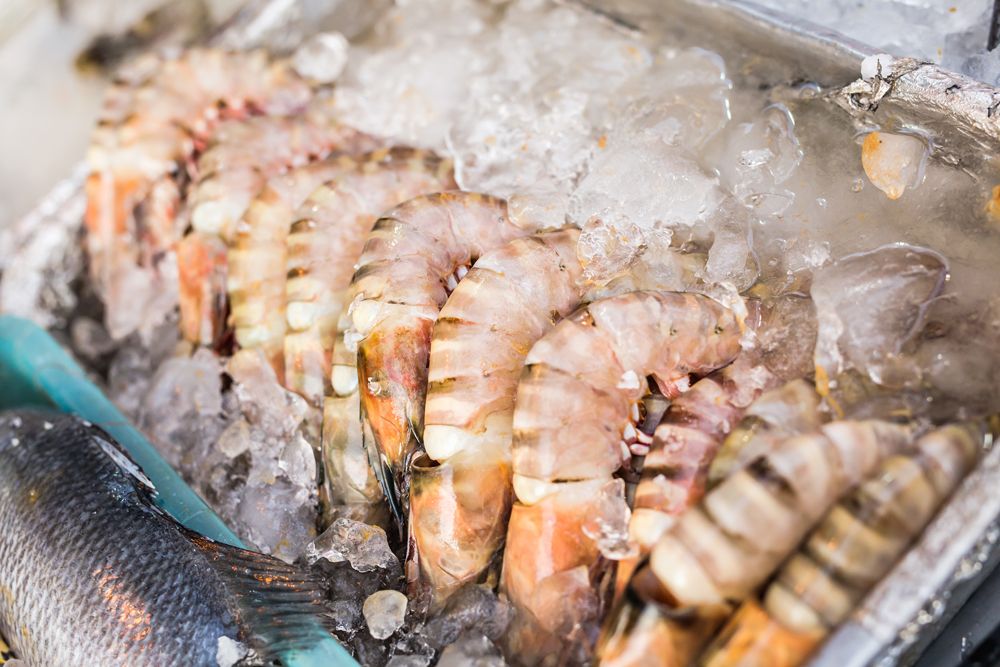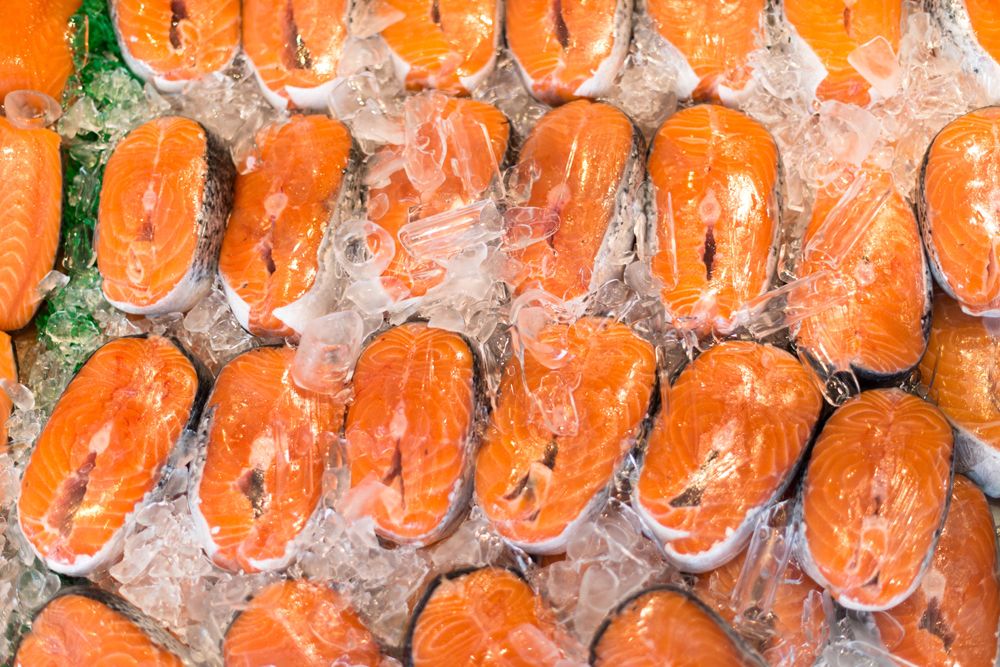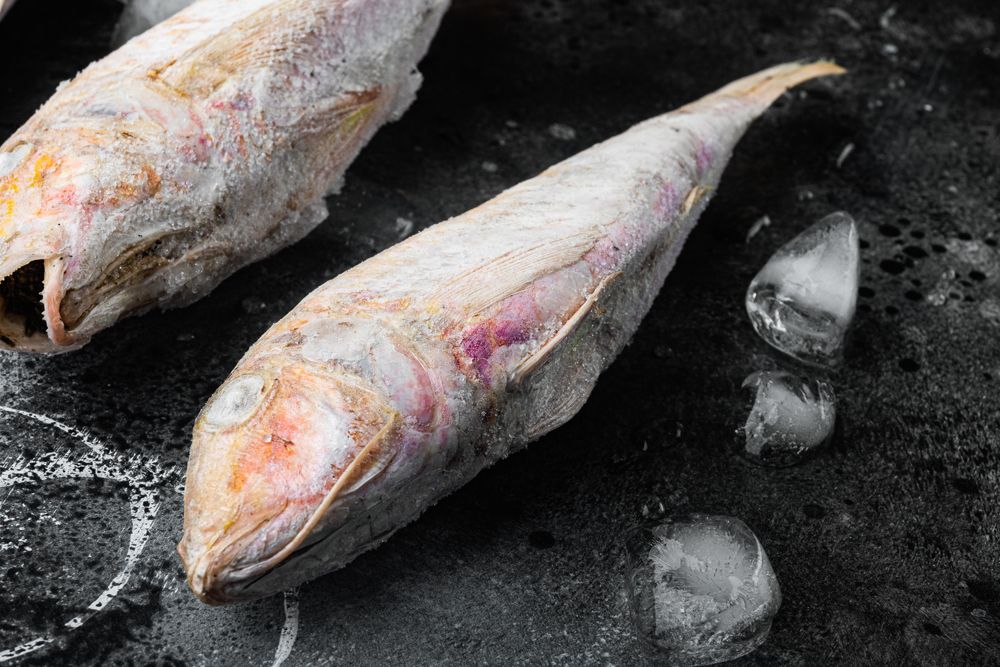RELIABLE GUIDELINES FOR BUYING FRESH FISH
Selecting fresh fish is easy once you know what to look out for.

Everyone is aware of the freshness of food which is the key factor of good eating. Fresh fish has important role in fighting hunger as well as malnutrition. Fish is not only a source of healthy fats and proteins, but also an exclusive source of vital nutrients. By eating fish we get long-chain omega-3 fatty acids, vitamin – D, calcium, and iodine. Nowadays, fish can be considered as a unique solution to all major existing health problems. With fresh fish we can prepare delicious and healthy meal. But if you have no experience in buying fish, you may not be able to find the freshest options available in the fish market. However, there are obvious symbols to search for when buying edible fish. Any fresh fish doesn't have an overpowering, "fishy" smell. On a whole fish, try to find out the bright-colored gills, clear eyes, and firm skin. For fillets, search for discoloration or a slippery body surface to indicate a spoiled fish. To ensure that your fish is of the highest quality, find a reputable fish market from where you can buy fresh fish satisfactorily.
Ways to choose quality whole fish



Check the eyes: - Before you hold the fish you want to buy, check the eyes of that variety. They should be wet, plump, crystal-clear, and gleaming with no drained features. If the eyes of fish appear as better-quality, you can keep the expectation with sensible assurance that the fish variety is fresh as well as healthy. Once the fish begins to get worse, the eyes dry out, become dull, and sink in or wither away. This points out that the chosen fish variety is unhealthy, and inappropriately preserved.
Check the fish fins: - The dorsal fins and tail of the fish should be intact, glowing, and wet. A fish that has been mismanaged will have shabby or ragged fins, while an older fish fins will be frail and dry. Fish with worn out and frayed fins would have caught hours before.
Punch the fish: - If the fish seller permits, try to touch the fish for further assessing the healthiness and freshness. It should sense wet, cold, and slippery, whereas not clammy. When pressed, it should bounce back to its normal shape, just like pressing on our own flesh. If it doesn't bounce back, it can be assumed that the meat has become lightened and cannot be worthy for your money. The fish that has lost its firmness will no longer be a fresh one.
Check the gills: - Check the gills of fishes for vitality and color of freshness. For the newly caught fishes, the gills will be bright red, and slowly becomes dark in due course. The brighter the color, the fresher will be the fish. The gills should also feel clean and cold, while not slimy. As days pass, the gills of a fish become dark brown or even black in color, indicating that the myoglobin turns into metmyoglobin which has brick-red-brown color. When time passes, fish gets aged, and mucus will be built around, making the fish sticky and slimy.
Check the scales: - Scales are intended to protect the fish from a ruthless watery background. When a fish is fresh, the scales will be shiny and firm, and covers the body of fish as an absolute shield against the rudiments. Less-fresh fish will often shed scales as you run your hand over them, and they may appear as dry and flaking.
Filleted or butchered fish: - If you wish to buy filleted fish, these tips will assist you choose the freshest variety. Predominantly, visual signs are enough to indicate a fresh piece of fish, but some tangible clues may help as well.
Search for cracks, breaks and pooling water: - Look for cracks in the fillet that run between the muscles and collagen cover which appears as the white lines running through the fish. Even breaks in the muscle tend to indicate maltreatment of the fish variety. Natural separation of the muscles along the collagen covering indicates that the fish is not very fresh. This is because of the enzymes that naturally present in the muscle tissue which mortifies the collagen, causing the muscles to tear under their own weight. Pooling water inside the container usually indicates that the fish is being aged and may lose its ability to retain moisture content.
Look for the reliability and color of the flesh: - For white fishes, such as halibut or cod, the meat must be fairly transparent. If it is extremely white and opaque, it signifies that the flesh is not fresh. For darker meat, like salmon or tuna, the flesh should be brilliant and very much soaked in color. Look for a lucid color contrast between the muscle, and the fat content. For every fish, make sure that the flesh is glossy and wet. Fish which often appear as chalky, sticky, or dry has likely been handled improperly. They might have kept in warm temperatures, frozen and unfrozen several times, or aged.
Selecting parts


Regarding edible parts, the body of a fish is quite simple when compared to a mammal. Even though there are not many parts to choose from them, some noteworthy differences are there between them. The most imperative thing to be considered is what you would be doing with the meat. Certain cuts are better than others for serving raw, cooking or boiling into a stew. Here are some instructions for choosing them wisely.
Tail: - Meat near the tail is generally hard, but low-priced, than fish filets. Muscles in the region carry out most the works in life and hence, they appear as hard. The tail meat is made less chewy by the process of slicing, and then often further made it less chewy with oil, vinegar, and salt when it is dressed.
Belly: - The belly is the most luxurious part of the fish, and also the fattiest region. For an oily gentle fish like tuna, belly is very yummy, and served as either braised or raw.
Filet: - The fish fillet is beautiful, lean, tasty, and awfully very resourceful. If cooked more, fish filets will dry out quickly, so treat them with utmost care.
Collar: - Compare the collar of the fish with shoulder of pork. They are good for slow-roasting and braising. The main drawback is that there are only two collars per fish, and they don't yield a lot of meat, so it will be expensive to make a meal out of collars. Moreover, they are too difficult to find in customary grocery stores.
Frozen fish

Frozen fish can be incredible and even better than fresh once in a while. In fact, the best tuna available in the world is always frozen at sea after being caught by scuba divers, or by lining that lead them into shut within. Once caught, they are gutted, bled or not, and kept extremely frozen until sold. Here are a couple of guidelines for choosing and processing frozen fish.
Find out how it was frozen
Frozen fish often acquires a bad name because companies as well as fish dealers stay around until a fish gets the age to freeze. Frozen bad fish will be still a bad fish itself. However, if it is frozen right after it is caught, it will be delicious when defrosted. It should be frozen very quickly, preferably as soon as it is killed, and to very cold temperatures, around -22 °F / -30 °C, to minimize the damage by ice crystals to the tissues.
Thaw slowly
The unharmed way to thaw fish is a gradual refrigeration process. Home cooks can simply keep the frozen fish on a tray or a plate in the refrigerator, and allow it to thaw for nearly 24 hours. Thawing on the countertop will be quicker, whereas, thawing in the refrigerator will protect your product in a far better way.

Conclusion
Fish is a very nourishing food. So, we must include fish item recipes in our daily diet. To get the vital nutrients of fish on a whole scale, the fish chosen must be fresh and healthy in all respects. Buying fresh fish are not as easy as buying other edible items for our home. It needs absolutely very good experience and knowledge. Understand the aforementioned fresh fish buying guidelines. This will surely support you in purchasing healthy fresh fish which offers all valuable nutrients.